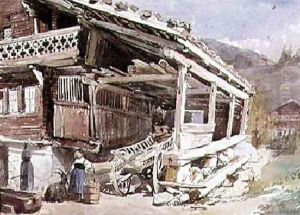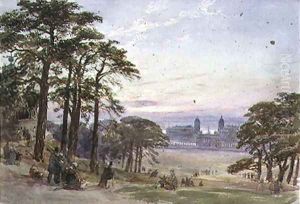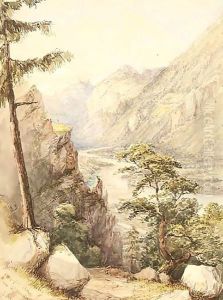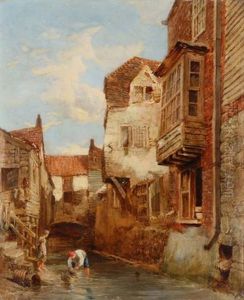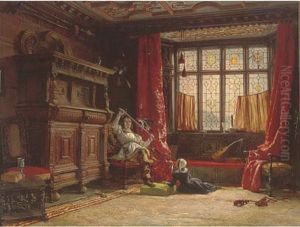William Collingwood Paintings
William Gershom Collingwood, born on August 6, 1854, in Liverpool, England, was a notable figure in the British arts scene during the late 19th and early 20th centuries. He was not only an accomplished painter, but also an author, antiquary, and a close friend and biographer of John Ruskin. Collingwood's multifaceted career spanned various disciplines, including art, archaeology, and literature, reflecting the Victorian era's interest in polymathy and the interconnection of knowledge.
Collingwood's artistic journey was deeply influenced by the renowned art critic and thinker John Ruskin. After studying at University College, Oxford, where he received a first-class degree in classics in 1876, Collingwood went on to become Ruskin's private secretary. The time he spent with Ruskin, who was based at Brantwood in the Lake District, had a profound impact on his artistic development and his worldview. Collingwood was involved in many of Ruskin's projects and helped him with his work, all the while honing his own skills as an artist and writer.
As a painter, Collingwood was skilled in watercolors and was known for his landscapes that captured the serene beauty of the English countryside, particularly the Lake District. His artistic works were exhibited at the Royal Academy and elsewhere. His love for the Lake District also manifested in his efforts to preserve the region's natural beauty and cultural heritage, which resonated with Ruskin's conservationist ideas.
In addition to his painting, Collingwood made significant contributions to archaeology and history. He wrote extensively on Norse and Anglo-Saxon art and culture, and he conducted fieldwork, including the excavation of Viking burial sites in the Lake District. His archaeological pursuits were driven by a desire to uncover and understand the past, an endeavor that was in harmony with the Victorian fascination with history and the origins of British culture.
Collingwood's literary output includes his works on Ruskin, such as the 'Life of John Ruskin' (1893), which remains an important source for understanding Ruskin's life and thought. He also authored a number of historical novels and texts on Norse mythology, reflecting his scholarly interests. Collingwood's diverse achievements are indicative of the intellectual curiosity and cultural engagement that characterized many thinkers of his time.
William Gershom Collingwood passed away on October 1, 1932, leaving behind a rich legacy that encompassed his contributions to art, archaeology, and literary scholarship. His work continues to be recognized for its breadth and depth, and his influence can still be seen in the ongoing appreciation and study of Ruskin, as well as in the fields of art and archaeology in Britain.
